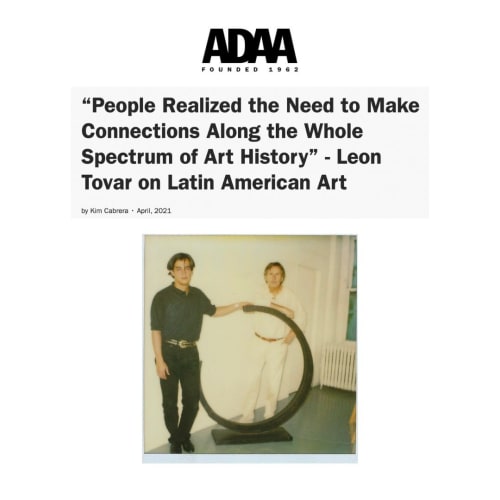Leon Tovar has been bringing important 20th-century Latin American art to an American and international audience for years – but that wasn’t always the program of Leon Tovar Gallery. When Leon opened his first space in Bogotá in 1991, he was focused on showing a roster of North American and European artists such as Sol LeWitt, Bernar Venet, and Josef Albers. It was only after moving to New York in 1998 that he realized there was a niche to fill: “I got the idea to make clear the real connections between Latin American artists and broader art history… I started to work here and present important programming featuring Latin American artists in different areas – geometric abstraction, optical, kinetic.”
Did you feel there was a lot of education you had to do with an American clientele, or do you think there was already an understanding here of Latin American art and its importance?
I had an advantage – I already knew how American artists worked, how European artists worked. I came here and learned a lot in the auction houses. I learned that we need to be very well-prepared with art historical knowledge in order to develop our program because most people have better ears than eyes. We need to explain to people how, why, optical art has been important. Why Yves Klein’s favorite artist was Jesús Rafael Soto. Why the Zero Group had connections with Latin American artists (one of the entrance pieces at the Guggenheim Museum for the Zero Group exhibition in 2014 was a Jesús Rafael Soto work). There are hundreds and hundreds of real connections, and this realization started from this chat with Sol LeWitt.
Do you see yourself as filling in gaps in the art historical narrative?
If you’re a collector – a real collector – you need to find complements to your collection.
You can’t build a collection of Surrealists if you don’t include Frida Kahlo, Leonora Carrington, Wifredo Lam, and Roberto Matta. You cannot talk about geometric abstraction without Carlos Rojas, Carmelo Arden Quin, Lucio Fontana. You cannot talk about Impressionism without Armando Reverón, Andrés de Santa Maria, because they were Impressionist artists also. If you are a landscape collector, you go to the School of Barbizon, but you also need to see the School of Quito. The light in Bogotá is the same light in Biarritz; the landscape artists have a connection over thousands of miles, even if they don’t know each other.


